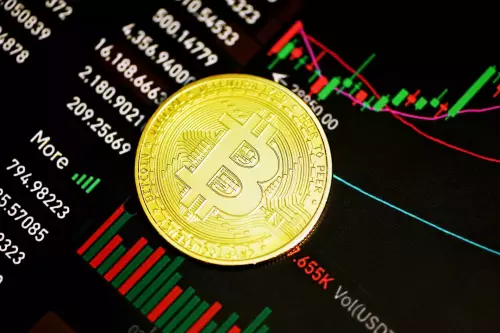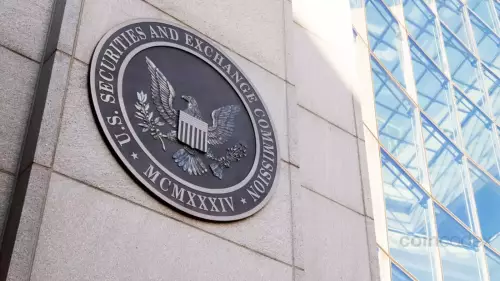 |
|
 |
|
 |
|
 |
|
 |
|
 |
|
 |
|
 |
|
 |
|
 |
|
 |
|
 |
|
 |
|
 |
|
 |
|
Cryptocurrency News Articles
Regulation of Stablecoins Has Become a Significant Point of Discussion in the Cryptocurrency Space
Mar 11, 2025 at 10:49 pm
This content is meant to inform and should not be considered financial advice. The views expressed in this article may include the author's personal opinions and do not represent Times Tabloid's opinion.

The regulation of stablecoins has become a significant point of discussion in the cryptocurrency space, especially with the introduction of the Genius Act. This act mandates that issuers of payment stablecoins possess the “technological capability to comply with the terms of any lawful order.”
This requirement extends to the ability to freeze, burn, or prevent the transfer of stablecoins as stipulated by the Act. To put it simply, if a court tells the issuer to freeze an account or confiscate tokens, the issuer must be able to carry out that order on-chain.
A recent discussion on X between legal expert Jeremy Hogan, blockchain researcher ‘Vet,’ and Ripple CTO David Schwartz shed light on how these regulatory expectations align with RLUSD, Ripple’s recently introduced stablecoin. The conversation also clarified Ripple’s reasoning for implementing freeze and clawback functionalities for RLUSD, sparking questions about whether the legislation was tailored with RLUSD in mind.
The Freezing and Clawback Mechanism of RLUSD
Hogan initially posed an important question:
“Can Ripple or Circle actually freeze RLUSD or USDC once it’s transferred? I didn’t think that was possible, for either.”
Vet responded with a direct confirmation, stating that both Ethereum and the XRP Ledger (XRPL) allow for the freezing and clawback of RLUSD. According to him, Ripple, as the issuer, can freeze or reclaim RLUSD if requested by law enforcement or through court orders.
This aligns with the regulatory requirements outlined in the Genius Act, highlighting the need for issuers to retain control over their stablecoins in compliance with legal obligations.
The discussion further revealed that Ripple’s decision to enable clawback functionality had initially delayed the introduction of the RLUSD AMM (Automated Market Maker) pool on the XRPL due to an amendment. However, in light of the regulatory landscape, this move appears to be a strategic and necessary step.
Understanding Clawback and Its Necessity
Vet’s exchange with David Schwartz provided deeper insights into why Ripple integrated clawback in addition to freeze for RLUSD. The debate arose when a user, ‘Cookie,’ asked: “Why is clawback needed on a stablecoin?”
Vet responded by stating that while other issuers, such as Circle and Tether, have implemented a system of blocking accounts, which serves a similar function to freezing, and input from another user, ‘FIGMENTZCRYPTO,’ highlighted the fact that Tether has also been known to cooperate with authorities in re-routing stolen funds.
However, in the case of RLUSD, Schwartz explained that the issuer, in this case, Ripple Labs, retains the ability to adjust the on-chain state of the tokens to reflect changes in legal obligations. This is crucial because, as he put it, “a stablecoin held by a regulated legal entity is supposed to represent a legal obligation.”
If something outside the ledger eliminates the legal obligation but the tokens are still there on the ledger, the ledger’s just wrong. There needs to be a way to fix it.
This statement underscores the fundamental challenge that stablecoins present within a decentralized ledger system. Unlike traditional assets, stablecoins are designed to closely mirror real-world financial claims, which can be altered by legal events.
For instance, if a dispute arises between two parties over a claim on a specific portion of RLUSD or if a fraud case leads to the cancellation of an obligation, that change must be reflected on-chain. This is where the capability to clawback becomes necessary.
The Issue with Frozen Trustlines
Schwartz also explained the distinction between freezing and clawback, especially in cases involving legal disputes. He provided an example:
“Say there’s a dispute between Alice and Bill, and the issuer doesn’t know who the tokens rightfully belong to. So they freeze the trustline. At this point, they don’t know to whom they owe the dollars those tokens represent. But they owe them to someone. So a frozen trustline can’t mean no legal obligation.”
This example highlights a key limitation of having only a freeze function. If Alice’s tokens are frozen but later Bob gains a court order proving he is the rightful owner of those funds, the issuer must still settle that obligation with Bob.
However, without clawback, the frozen tokens would remain in Alice’s account despite her no longer having any legal claim to them. This mismatch between on-chain and off-chain realities creates a situation where the issuer could be held liable for an obligation they can no longer fulfill.
But by implementing both freeze and clawback, Ripple ensures that RLUSD accurately reflects the issuer’s obligations at all times. This capability prevents situations where an issuer could be forced to misrepresent their financial position or be unable to respond to a regulator’s demands.
Does the Genius Act Specifically Target RLUSD?
Concluding the discussion, Hogan remarked:
“It’s almost as though this legislation was written with RLUSD in mind.”
While the provisions of the Genius Act apply to all
Disclaimer:info@kdj.com
The information provided is not trading advice. kdj.com does not assume any responsibility for any investments made based on the information provided in this article. Cryptocurrencies are highly volatile and it is highly recommended that you invest with caution after thorough research!
If you believe that the content used on this website infringes your copyright, please contact us immediately (info@kdj.com) and we will delete it promptly.






























































